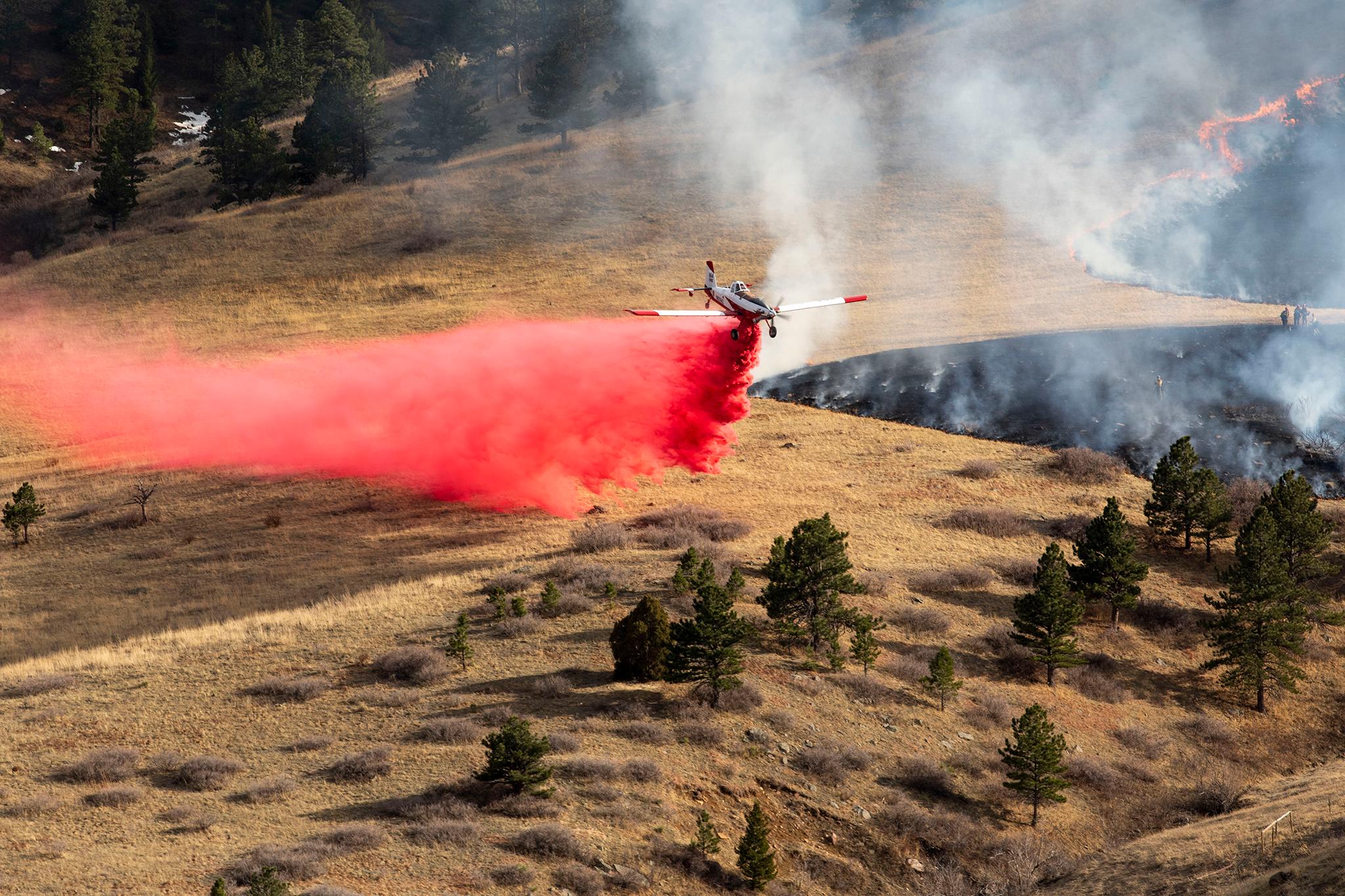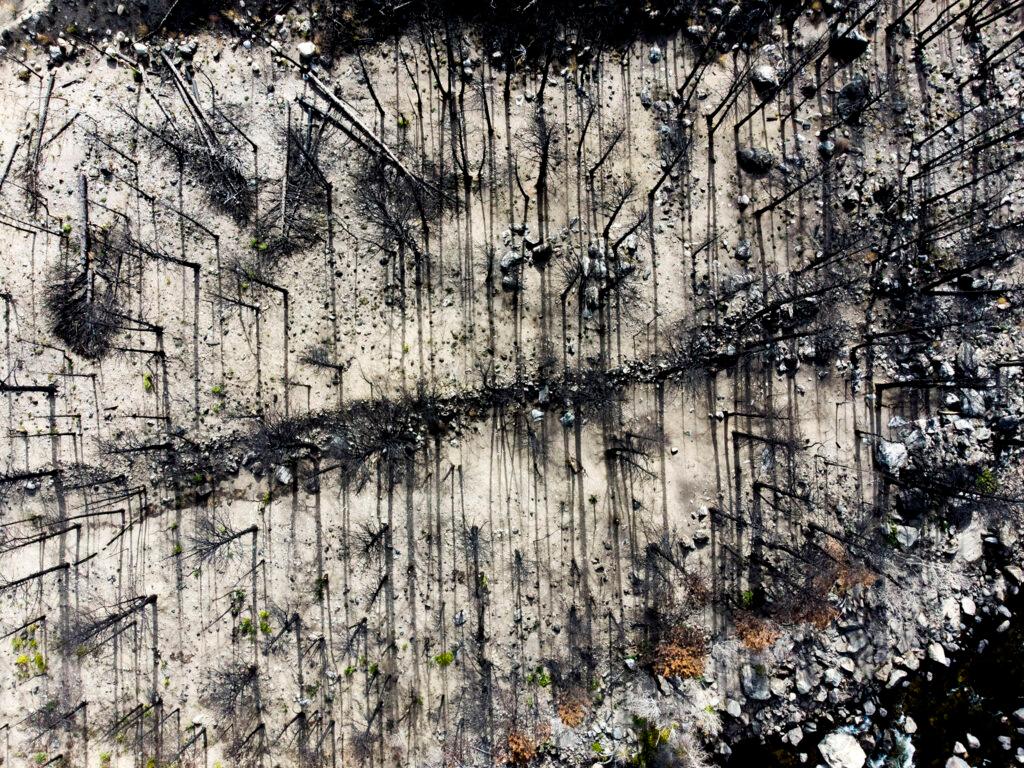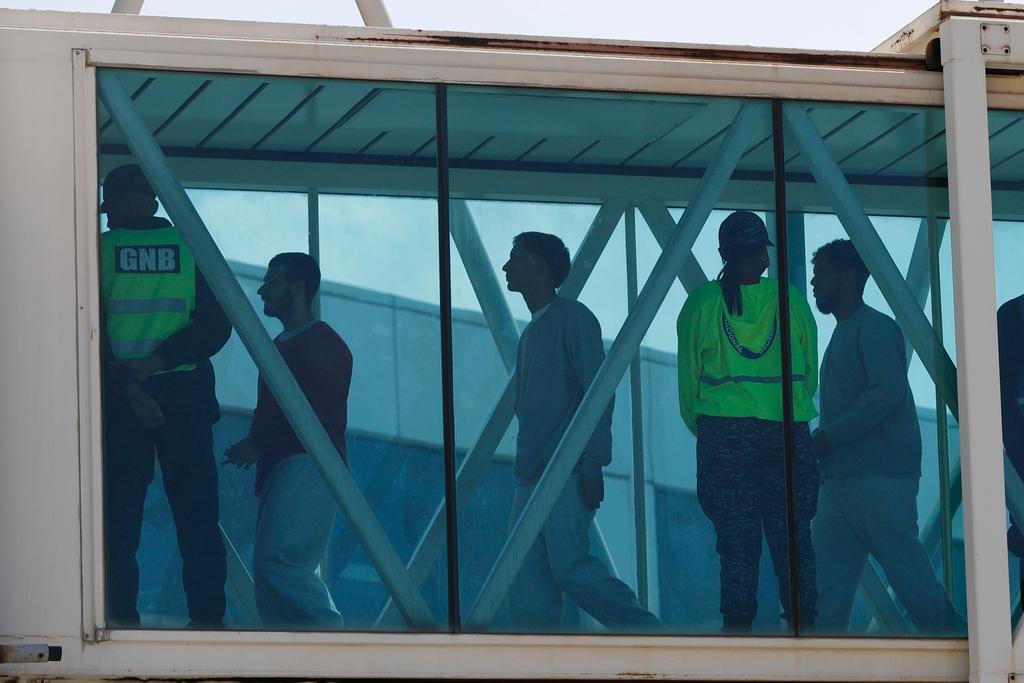
With wildfires becoming bigger and more destructive as the West dries out and heats up, agencies and officials tasked with preventing and battling the blazes could soon have a new tool to add to their arsenal of prescribed burns, pick axes, chain saws and aircraft.
The high-tech help could come by way of an area not normally associated with fighting wildfires: artificial intelligence. And space.
Lockheed Martin Space, based in Jefferson County, is tapping decades of experience of managing satellites, exploring space and providing information for the U.S. military to offer more accurate data quicker to ground crews. They are talking to the U.S. Forest Service, university researchers and a Colorado state agency about how their their technology could help.
By generating more timely information about on-the-ground conditions and running computer programs to process massive amounts of data, Lockheed Martin representatives say they can map fire perimeters in minutes rather than the hours it can take now. They say the artificial intelligence, or AI, and machine learning the company has applied to military use can enhance predictions about a fire’s direction and speed.
“The scenario that wildland fire operators and commanders work in is very similar to that of the organizations and folks who defend our homeland and allies. It’s a dynamic environment across multiple activities and responsibilities,” said Dan Lordan, senior manager for AI integration at Lockheed Martin’s Artificial Intelligence Center.
Lockheed Martin aims to use its technology developed over years in other areas to reduce the time it takes to gather information and make decisions about wildfires, said Rich Carter, business development director for Lockheed Martin Space’s Mission Solutions.
“The quicker you can react, hopefully then you can contain the fire faster and protect people’s properties and lives,” Carter said.
The concept of a regular fire season has all but vanished as drought and warmer temperatures make Western lands ripe for ignition. At the end of December, the Marshall fire burned 991 homes and killed two people in Boulder County. The Denver area just experienced its third driest-ever April with only 0.06 of an inch of moisture, according to the National Weather Service.
Colorado had the highest number of fire-weather alerts in April than any other April in the past 15 years. Crews have quickly contained wind-driven fires that forced evacuations along the Front Range and on the Eastern Plains. But six families in Monte Vista lost their homes in April when a fire burned part of the southern Colorado town.
Since 2014, the Colorado Division of Fire Prevention and Control has flown planes equipped with infrared and color sensors to detect wildfires and provide the most up-to-date information possible to crews on the ground. The onboard equipment is integrated with the Colorado Wildfire Information System, a database that provides images and details to local fire managers.
“Last year we found almost 200 new fires that nobody knew anything about,” said Bruce Dikken, unit chief for the agency’s multi-mission aircraft program. “I don’t know if any of those 200 fires would have become big fires. I know they didn’t become big fires because we found them.”
When the two Pilatus PC-12 airplanes began flying in 2014, Colorado was the only state with such a program conveying the information “in near real time,” Dikken said. Lockheed Martin representatives have spent time in the air on the planes recently to see if its AI can speed up the process.
“We don’t find every single fire that we fly over and it can certainly be faster if we could employ some kind of technology that might, for instance, automatically draw the fire perimeter,” Dikken said. “Right now, it’s very much a manual process.”

Something like the 2020 Cameron Peak fire, which at 208,663 acres is Colorado’s largest wildfire, could take hours to map, Dikken said.
And often the people on the planes are tracking several fires at the same time. Dikken said the faster they can collect and process the data on a fire’s perimeter, the faster they can move to the next fire. If it takes a couple of hours to map a fire, “what I drew at the beginning may be a little bit different now,” he said.
Lordan said Lockheed Martin engineers who have flown with the state crews, using the video and images gathered on the flights, have been able to produce fire maps in as little as 15 minutes.
The company has talked to the state about possibly carrying an additional computer that could help “crunch all that information” and transmit the map of the fire while still in flight to crews on the ground, Dikken said. The agency is waiting to hear the results of Lockheed Martin’s experiences aboard the aircraft and how the actionable intelligence (AI) might help the state, he added.
The company is also talking to researchers at the U.S. Forest Service Missoula Fire Sciences Laboratory in Montana. Mark Finney, a research forester, said it’s early in discussions with Lockheed Martin.
“They have a strong interest in applying their skills and capabilities to the wildland fire problem, and I think that would be welcome,” Finney said.
The lab in Missoula has been involved in fire research since 1960 and developed most of the fire-management tools used for operations and planning, Finney said. “We’re pretty well situated to understand where new things and capabilities might be of use in the future and some of these things certainly might be.”
However, Lockheed Martin is focused on technology and that’s “not really been where the most effective use of our efforts would be,” Finney said.
“Prevention and mitigation and preemptive kind of management activities are where the great opportunities are to change the trajectory we’re on,” Finney said. “Improving reactive management is unlikely to yield huge benefits because the underlying source of the problem is the fuel structure across large landscapes as well as climate change.”
Logging and prescribed burns, or fires started under controlled conditions, are some of the management practices used to get rid of fuel sources or create a more diverse landscape. But those methods have sometimes met resistance, Finney said.
As bad as the Cameron Peak fire was, Finney said the prescribed burns the Arapaho and Roosevelt National Forests did through the years blunted the blaze’s intensity and changed the flames’ movement in spots.
“Unfortunately, they hadn’t had time to finish their planned work,” Finney said.
Lordan said the value of artificial intelligence, whether in preventing fires or responding to a fire, is producing accurate and timely information for fire managers, what he called “actionable intelligence.”
One example, Lordan said, is information gathered and managed by federal agencies on the types and conditions of vegetation across the country. He said updates are done every two to three two years. Lockheed Martin uses data from satellites managed by the European Space Agency that updates the information about every five days.
Lockheed is working with Nvidia, a California software company, to produce a digital simulation of a wildfire based on an area’s topography, condition of the vegetation, wind and weather to help forecast where and how it will burn. After the fact, the companies used the information about the Cameron Peak fire, plugging in the more timely satellite data on fuel conditions, and generated a video simulation that Lordan said was similar to the actual fire’s behavior and movement.
While appreciating the help technology provides, both Dikken with the state of Colorado and Finney with the Forest Service said there will always be a need for “ground-truthing” by people.
Applying AI to fighting wildfires isn’t about taking people out of the loop, Lockheed Martin spokesman Chip Eschenfelder said. “Somebody will always be in the loop, but people currently in the loop are besieged by so much data they can’t sort through it fast enough. That’s where this is coming from.”








